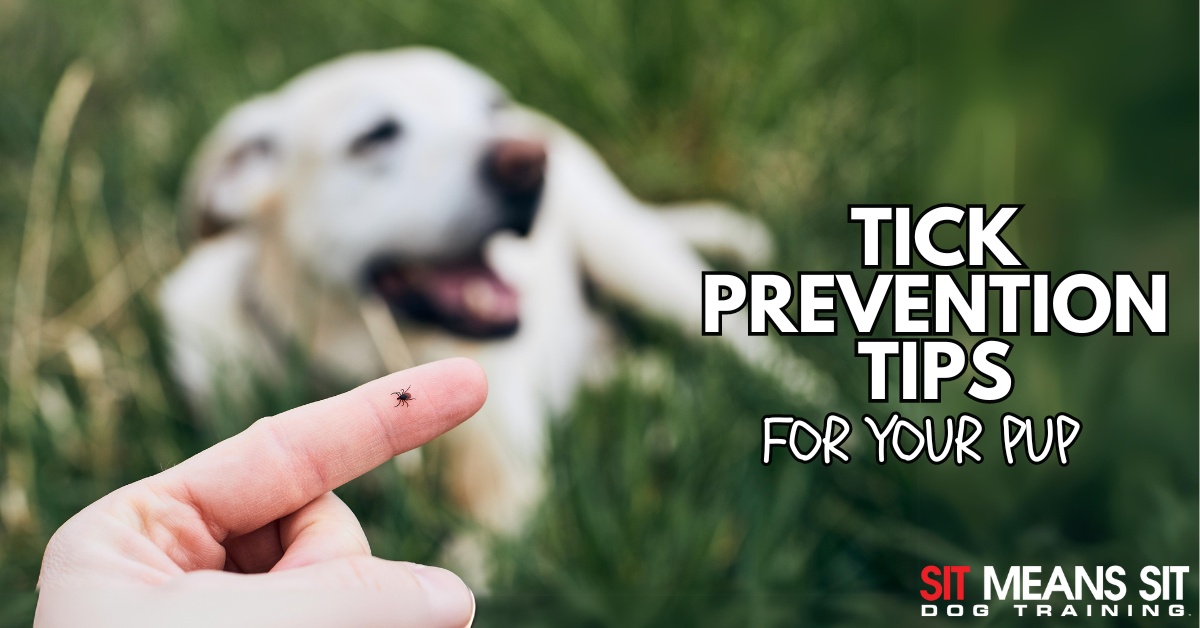
Tick Prevention Tips for Dog Owners
As the weather warms up and you and your pup venture outdoors more often, it’s crucial to be aware of the increased risk of ticks. These common external parasites can carry diseases and cause significant discomfort for your dog. By taking proactive steps to prevent ticks from attaching to your dog, you can protect your furry friend from serious health issues such as Lyme Disease. Knowing how to prevent ticks is key to your pup’s health and well-being this summer.

Conduct regular searches
Even if your pooch isn’t actively showing signs of having a tick, it’s a good idea to give them a thorough check after they’ve spent time outside. Ticks are good at hiding, so checking your dog’s fur using a comb can be helpful. There are even flea combs with extra-fine teeth specifically designed to check a dog’s coat for ticks and remove them. Pay special attention to areas with thick or matted fur, as well as your dog’s armpits, paws, behind their ears, and at the base of their tail.
Tick prevention treatments
Ticks are a year-round threat to dogs in many areas, so it’s a good idea to talk to your vet about topical or oral medication as a prevention measure. Topical insecticides typically last between 30-90 days and protect your pup from becoming a host for ticks when spending time outdoors. These treatments should be applied directly to your dog’s skin and provide long-term protection against ticks. Flea and tick prevention collars are another option, and they last between 4 and 6 months, with the Seresto brand lasting for eight months. When selecting medications, topical treatments, or over-the-counter solutions, it’s essential to discuss this with your vet to ensure that the treatment is not harmful to your pup.
Avoid risky areas
There are several outdoor areas that ticks tend to gravitate towards, which you may want to avoid when taking your furry friend with you. Areas with piles of leaves, dense vegetative woods, and overgrown shrubs are all hot spots for ticks, so avoiding these types of areas when possible will put your pup at less risk. You can also prevent ticks by reducing the risk of ticks in your home and yard. Some tasks that dog owners should do regularly include keeping trash secured, mowing the lawn and keeping bushes trimmed, and vacuuming furniture. It’s also important to prevent ticks on your pup’s belongings. You should regularly wash your furry friend’s bedding and toys with hot water and dry them at a high temperature to kill pests.
Symptoms of having a tick
Ticks are often hard to spot, meaning knowing the symptoms of dogs having a tick is essential to know when to look for one. A few signs that your pup may have a tick include:
- Hair loss
- Skin redness
- Intense itching
- Scrapes on the body
Removing Ticks from your pup
In the event that you find a tick on your dog, it’s vital to know how to remove it safely. After discovering a tick on your dog, you should remove it immediately to prevent the tick from continuing to feed on your dog and increasing the risk of disease. Use a small pair of tweezers to grab the tick at its base, as close to your dog’s skin as possible, and pull upwards. If tweezers don’t work, several tick removal tools are available online and in stores. After successfully removing the tick, use an antiseptic such as isopropyl alcohol to disinfect the area where the tick was attached. One crucial step is to place the tick in a plastic bag or container in case your dog begins to show signs of illness, in which case you should bring the tick to the veterinarian.
Check out these related blogs for more dog pest-prevention tips!
How to Remove a Tick from Your Dog
